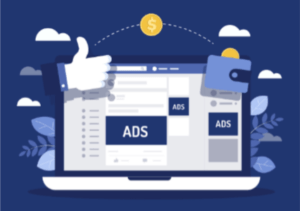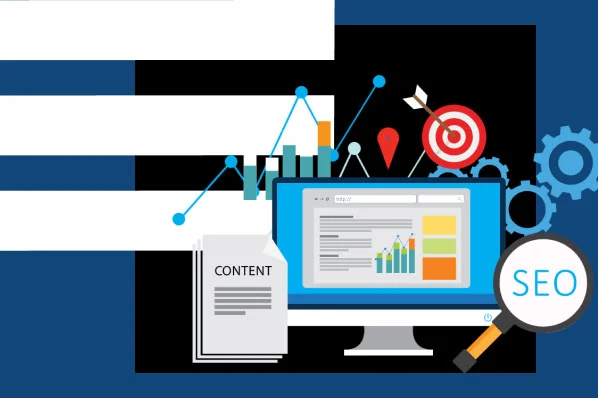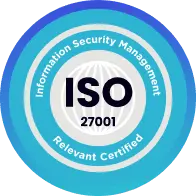The concept of Average Cost Per Click (CPC) is a constant concern for everyone in the online advertising realm.

The lower your CPC, the more you can stretch your budget to accommodate additional clicks. But the question remains: how can you effectively lower your Average CPC?
 It’s crucial to bear in mind that an auction essentially dictates the average CPC you’ll end up with. Your final price tag is a direct reflection of what both you and your competitors are willing to shell out. While manual bidding provides a direct means of controlling your bid, it does come at the cost of forfeiting the over 60 signals that factor into automated bidding.
It’s crucial to bear in mind that an auction essentially dictates the average CPC you’ll end up with. Your final price tag is a direct reflection of what both you and your competitors are willing to shell out. While manual bidding provides a direct means of controlling your bid, it does come at the cost of forfeiting the over 60 signals that factor into automated bidding.
Instead, consider diversifying your keyword strategies. This could involve bidding on synonyms like “attorney” and “lawyer” or even targeting misspelled search terms. A common budget pitfall to avoid is bidding on identical concepts across multiple campaigns or ad groups. Always ensure that you’re not inadvertently entering the same auctions with the same concepts.
For instance, bidding on the keyword “dog walker near me” in a campaign targeting Boston and another one targeting New York wouldn’t drive up your auction costs. However, bidding on the exact same keyword concept targeting both locations would result in duplicates, inevitably inflating your Average CPC.
Now, let’s delve into why some Average CPCs soar to seemingly astronomical heights. Certain industries or verticals naturally command higher CPCs due to the nature of the services they offer. Additionally, factors like geographical location and the cost of living can exert their influence on CPC rates.
 It’s pivotal to set realistic expectations when it comes to Average CPC. If you set it too low, you risk not allocating enough budget to generate a reasonable return on investment (ROI) from your marketing efforts. Conversely, if you set it too high, your campaigns may become complacent and inefficient.
It’s pivotal to set realistic expectations when it comes to Average CPC. If you set it too low, you risk not allocating enough budget to generate a reasonable return on investment (ROI) from your marketing efforts. Conversely, if you set it too high, your campaigns may become complacent and inefficient.
As more accounts gravitate toward automated bidding, it’s essential to factor in the time it takes for new campaigns to identify their keyword champions. Sometimes, investing in more expensive keywords can be a wise choice, especially if you know that your most valuable customers tend to search in a particular way and make transactions at specific times.
However, don’t fall into the trap of pursuing cheap clicks just for the sake of it, as it can drain your budget and leave you without resources to target your most promising prospects. Striking a balance between efficiency and pragmatism is key to ensuring the optimal performance of your account.
In conclusion, the primary factor driving up CPCs is competition. Avoid bidding against yourself inadvertently and always maintain reasonable expectations regarding the competitiveness and value of your chosen keyword concepts. By doing so, you can navigate the complex world of CPC advertising more effectively.
15 Tips for reducing the cost of a click in Google and Facebook ads
- When it comes to selecting the right keywords for your online campaign, it’s crucial to make thoughtful choices rather than simply opting for the cheapest options available. While keyword research is a fundamental aspect of Google Search advertising, it’s not just about dismissing the priciest keywords right away. Instead, focus on factors like search volume and the specific types of queries you want to attract.
 For instance, if your highest-converting keyword happens to be the most expensive, it wouldn’t be wise to sacrifice potential conversions in the name of budget-consciousness. However, you might consider trimming down your keyword list in other areas to allocate more budget to that high-converting keyword.
For instance, if your highest-converting keyword happens to be the most expensive, it wouldn’t be wise to sacrifice potential conversions in the name of budget-consciousness. However, you might consider trimming down your keyword list in other areas to allocate more budget to that high-converting keyword.
Alternatively, a more expensive keyword could have a higher average search volume, potentially bringing more traffic to your website and ultimately improving your Click-Through Rate (CTR). This, in turn, enhances your Quality Score, allowing you to secure more clicks for less in the long run.
In summary, cost is still a significant factor in keyword selection, but it should be balanced with considerations of search volume and user intent. Striking a healthy balance between low-cost and high-reward keywords will help you achieve the lowest Cost Per Click (CPC) without compromising on conversion quality or quantity.
- Keep in mind that bidding is only one part of the equation when it comes to paying for clicks in a Google Ads auction. For example, an advertiser with a lower bid but a high Quality Score can still secure a winning position in the auction and potentially obtain clicks at a lower cost. Quality Score plays a pivotal role in this scenario.
Google is willing to prioritize ads with higher Quality Scores because it aims to maximize revenue from paid search ads while ensuring a positive user experience. Thus, Google may accept a bid resulting in a lower CPC if it means delivering a more relevant and valuable ad to the viewer.
 Beyond expected Click-Through Rate (CTR), your keyword Quality Score also considers factors like ad relevance and landing page experience. For your ads, regularly refresh and update them, incorporating any newly added keywords. Additionally, review Google’s suggestions directly within the ad editor section to assess your ad’s current strength and identify areas for improvement.
Beyond expected Click-Through Rate (CTR), your keyword Quality Score also considers factors like ad relevance and landing page experience. For your ads, regularly refresh and update them, incorporating any newly added keywords. Additionally, review Google’s suggestions directly within the ad editor section to assess your ad’s current strength and identify areas for improvement.
As for your landing pages, ensure that they contain the core keywords, similar to your ad copy, and adhere to best practices for landing page design.
- Consider exploring the Google Search Partner Network as a cost-effective strategy. This network allows your ads to appear on additional websites with an integrated search feature that falls under the Google family. Clicks from Search Partners can often be more affordable due to lower competition. You can opt your campaign into this network and measure its performance against Google’s Search Engine Results Page (SERP) to assess whether it offers cheaper clicks.
- Exclusions are powerful tools to reduce costs in Display ads. Since Display ads are eligible to appear on various sites within the Display Network by default, using exclusions is essential to avoid spending on expensive, irrelevant clicks. In addition to basic exclusions like locations, consider Display-specific exclusions:

- Topics: Exclude content categories that don’t align with your Display ad.
- Audiences: Avoid showing your ads to certain audiences, such as your converters or remarketing lists.
- Placements: Choose which types of websites or apps your ads appear on. For example, excluding mobile app games can prevent accidental clicks.
Google’s Dynamic Exclusion Lists can help you efficiently manage Display exclusions.
- Reevaluate your bidding strategy to align it with your budget and goals. Adjust your Max CPC bid to attract clicks that fit your budget. If you’re using automated bidding, A/B test different bidding strategies to determine what works best for you.
- Experiment with audience targeting by applying multiple audience segments to your Display campaign. Just like selecting keywords for a search campaign, remember that the audience with the highest rewards may not have the lowest CPC. Aim for a balanced mix of high-reward and low-cost audiences to maximize results.
- To lower your CPC in Google Shopping campaigns, consider building negative keyword lists that include competitors. This strategy can help level the playing field and prevent you from paying higher CPCs when appearing alongside big-brand products.
- Try adopting a “priority” structure for your bidding in Google Shopping campaigns. Prioritizing your bidding based on the type of traffic each product category attracts can help you manage your CPC more effectively.
- Optimize your product feed attributes to ensure accurate matching with search queries. A well-optimized product feed can reduce CPC by directing your listings to the most relevant searches.
- Lowering CPC in Facebook ads requires a different approach since you can’t target specific search queries. Instead, focus on optimizing your ad copy to improve engagement and click-through rates. Experiment with different ad elements such as images, CTA buttons, and ad text to enhance CPC performance.
 Choose your campaign objectives wisely in Facebook advertising. Different objectives may result in varying CPCs, so select the one that aligns best with your goals. If uncertain, split your campaigns to test multiple objectives simultaneously.
Choose your campaign objectives wisely in Facebook advertising. Different objectives may result in varying CPCs, so select the one that aligns best with your goals. If uncertain, split your campaigns to test multiple objectives simultaneously.- Consider using ad scheduling as a money-saving feature in Facebook campaigns. By controlling when your ads are displayed, you can reduce CPC by ensuring your ads appear when your target audience is most active and receptive.
- In Instagram advertising, customize your ad placements to match your ad type and campaign goals. Avoid wasting clicks on irrelevant placements by selecting the most appropriate options.
- Be selective with your targeting on Instagram. Narrow down your audience by factors like age, location, and interests to reduce CPC and improve ad relevance.
- Focus on engagement with your Instagram ads. Encourage actions like comments, likes, and shares to improve your ad’s ranking in Instagram’s algorithm. Engaging ads are more likely to drive conversions and growth.
In summary, lowering CPC in various advertising platforms requires a tailored approach. By carefully selecting keywords, optimizing ad quality, leveraging exclusions, and experimenting with bidding strategies, you can work towards achieving more cost-effective campaigns on Google, Facebook, and Instagram.
Author
-

Saisha is an experienced SEO publisher with extensive experience in digital marketing. She received her education in the field of Marketing in University of Michigan, which laid a solid foundation for a successful career in online marketing.Over time, Sasha has expanded her experience working with clients in various sectors, from small businesses to large enterprises. She is not only a professional in the field of SEO publications, but also actively participates in the exchange of knowledge in the marketing community.
View all posts







